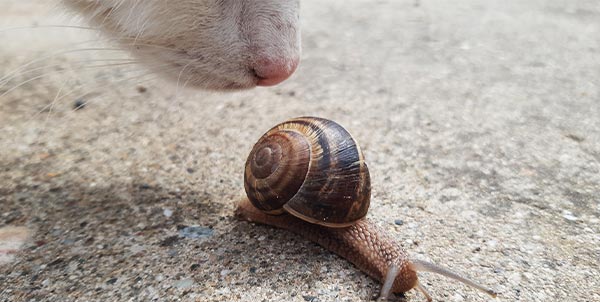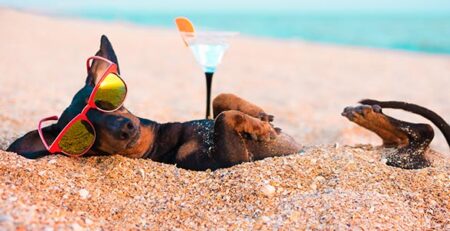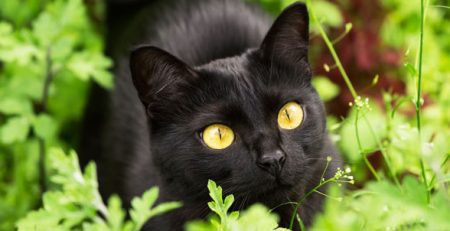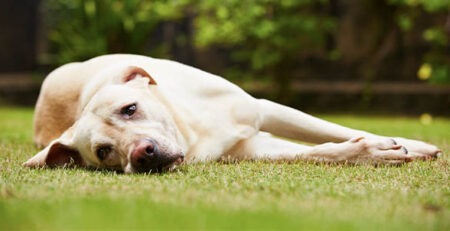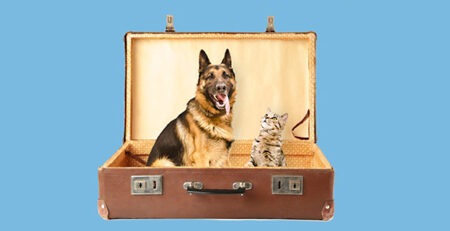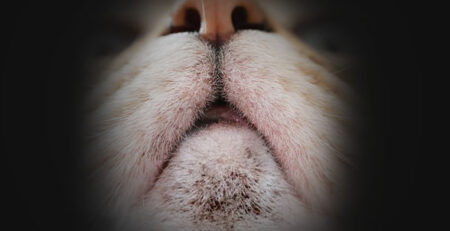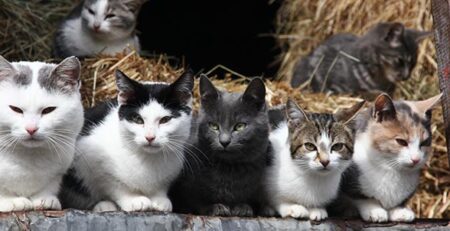Table of Contents
Strongyles are lungworms that can infest the respiratory system of dogs and cats through ingestion of shell-less snails and slugs.
Lung strongyles are roundworms (nematodes) that can infest many species of animals, including dogs and cats.
Dogs and cats become infested primarily by ingestion of the parasite’s intermediate host, a terrestrial gastropod mollusk, i.e., shell-less snails or slugs.
Or, as a result of predation by hosts such as rodents, birds, reptiles and amphibians.
So, animals that live outdoors or frequent gardens, parks or green areas are particularly susceptible to these parasites.
To date, reports of this parasitosis have been sporadic to the point that it has been considered a rare condition and therefore neglected or undiagnosed.
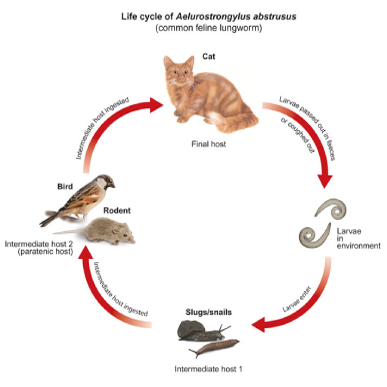
Recently, cases of strongyloides are becoming increasingly frequent
Current environmental conditions are very favorable for the reproduction of snails and slugs but are also ideal for the maintenance of the life cycle and the spread of the pest.
So, it increases the chance for dogs and cats to prey on snails and slugs and thus become infested, developing strongyloides, which is no longer to be considered so rare.
The parasite responsible for pulmonary strongyloides in dogs isAngiostrongylus vasorum and is different from that which affects cats.
The main culprit of pulmonary strongyliosis in cats is Aelurostrongylus abstrusus
The parasite Aelurostrongylus abstrusus is the most common, followed by Troglostrongylus brevior, Eucoleus aerophilus, and finally the much rarer Oslerus rostratus .
The larvae, once they reach the intestine of the cat or dog through ingestion of the mollusk, reach the internal organs where they mutate to adult parasites.
Adult males (about 7.5 mm) and females (about 9.9 mm), locate in the terminal bronchioles and alveolar ducts of the lung: this is where they lay their eggs.
The eggs hatch immediately releasing larvae that ascend to the pharynx, where they are swallowed and arrive in the intestines, then eliminated with feces.
The cycle continues within the intermediate host, snail or slug, which ingests larvae from the feces of the infested cat or dog, and so on.
Symptoms of pulmonary strongyloides
The course of the disease may also be asymptomatic for a long time.
It all depends on the general health of the animal and the parasite load, that is, the amount of larvae ingested.
Generally, individuals with compromised immune systems or in very young individuals are more susceptible to developing the disease.
Symptoms, also referable to other respiratory diseases, are:
- cough
- difficulty breathing
- tearing of the eyes
- nasal discharge
- slimming
- vomiting
- diarrhea
In advanced forms, the animal may manifest coagulative and neurological disorders, eventually leading, if pharmacological intervention is not taken, to death.
How is the diagnosis made?
The presence of these parasites is diagnosed through an examination of stools collected on three different days performed using the Baermann technique.
In contrast, chest X-ray examination and ultrasonography provide information on the severity of the disease.
What therapy to eradicate pulmonary strongyles?
Once the parasitosis is diagnosed, there are various drugs that can eradicate the parasites that will be prescribed in dosages and timing by the veterinarian.
Precautions to be taken
It is true that strongyloides is a treatable disease, but prevention is always the key weapon to avoid discomfort and illness in dogs and cats.
First and foremost, it is a good idea to have dogs and cats periodically examined and have their feces examined.
Prevention is also based on limiting the possibility of the four-legged animal ingesting the intermediate hosts of the parasite.
If you suspect that your cat or dog has lung strongyles or in case we have never been specifically tested to reveal their presence, contact us immediately for a consultation.
Our Staff Veterinarians are available to give your cat a complete examination and to assess its health status.
We would also like to remind you that Clinica La Veterinaria is always open h24 every day including holidays and with First Aid service from 8 pm to 8 am.

